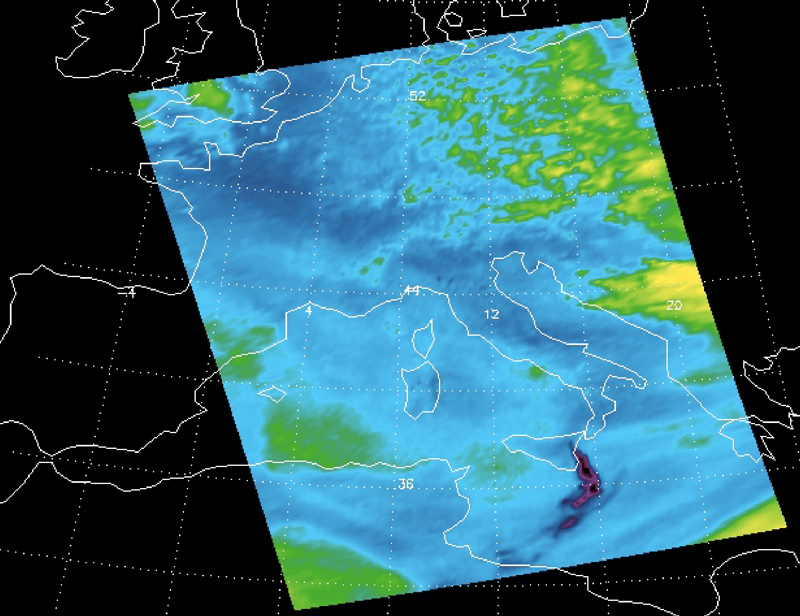Sulfur Dioxide Plume from Mt. Etna Eruption 2002

Mt. Etna, a volcano on the island of Sicily, erupted on October 26, 2002. Preliminary analysis of data taken by the Atmospheric Infrared Sounder (AIRS) on NASA's Aqua satellite on October 28 shows the instrument can provide an excellent means to study the evolution and structure of the sulfur dioxide plume emitted from volcanoes. These data also demonstrate that AIRS can be used to obtain the total mass of sulfur dioxide injected into the atmosphere during a volcanic event, information that may help us to better understand these dangerous natural occurrences in the future.
The image clearly shows the sulfur dioxide plume. This image was created by comparing data taken at two different frequencies, or channels, and creating one image that highlights the differences between these two channels. Both channels are sensitive to water vapor, but one of the channels is also sensitive to sulfur dioxide. By subtracting out the common water vapor signal in both channels, the sulfur dioxide feature remains and shows up as an enhancement in the difference image.


